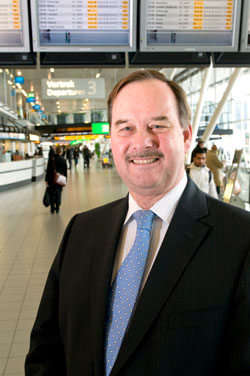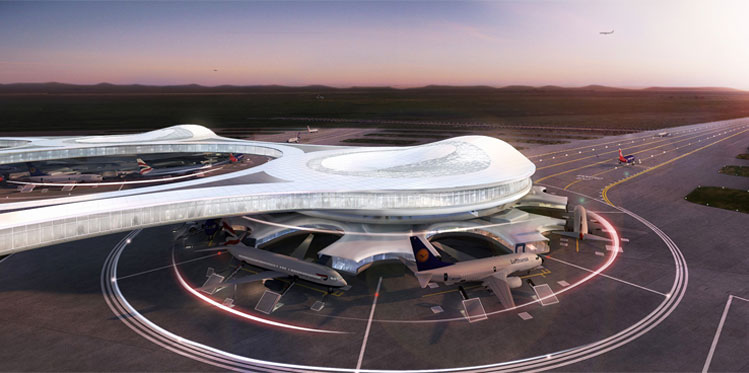
Ad Rutten, CEO of Turnaround Terminal and former EVP & COO, Royal Schiphol Group: “The Turnaround Terminal is like a machine aimed at efficiency rather than flexibility. It opens up a new paradigm in the landing and take-off cycle. The Turnaround Terminal is an innovative platform, but also a platform for further innovation.”
Ad Rutten, CEO of Turnaround Terminal and former EVP & COO, Royal Schiphol Group, interviewed by Ross Falconer.
After having served 10 years in the Royal Netherlands Marine Corps, Ad Rutten enjoyed a 35-year career in aviation, both with KLM and Royal Schiphol Group. He was responsible for terminal and airside operations at Amsterdam Airport Schiphol as General Manager, before becoming EVP & COO of Royal Schiphol Group for the nine years preceding his retirement in 2014.
“It is very hard to name a specific highlight at a dynamic airport like Schiphol,” he says. “I witnessed growth from around seven million passengers to the current 60 million, and there were highlights like opening new terminals and other infrastructure. I always felt privileged to work with the dedicated Schiphol staff and experience the innovative stance that Schiphol always has. A specific highlight just before I retired was the accommodation of the 2014 Nuclear Security Summit, which was handled flawlessly.”
Rutten was, of course, an active member of ACI, serving as President of ACI EUROPE (2009-2011) and as a member of ACI’s World Governing Board and Executive Committee.
He is presently an independent consultant, owner of Ocean Management Solutions, and CEO of Turnaround Terminal. Indeed, Rutten is participating in the Airport Development Conference at this year’s ACI Airport Exchange, where he will brief delegates on the Turnaround Terminal concept, which he describes as revolutionary for aircraft turnaround. “The terminal consists of a rotating disc and a static core,” he explains. “Aircraft park on the disc and are serviced from the core in various stages with unrivalled efficiency, and a minimal footprint, combined with double capacity compared to traditional concourses. The handling process is in sync with the sequential process of arriving aircraft.”
The initial idea for the concept of the Turnaround Terminal was developed some five years ago in a creative process, under the auspices of Royal Schiphol Group, named ‘I-Port’. It was then further developed by the company ATAI, which brought the concept to its present stage of being ready for introduction to the aviation community.
“The key message that we will convey at ACI Airport Exchange is that we have a revolutionary product,” says Rutten. “The Turnaround Terminal is like a machine aimed at efficiency rather than flexibility. It opens up a new paradigm in the landing and take-off cycle. The Turnaround Terminal is an innovative platform, but also a platform for further innovation.”

The Turnaround Terminal consists of a rotating disc and a static core. Aircraft park on the disc and are serviced from the core in various stages. The handling process is in sync with the sequential process of arriving aircraft.
Efficiencies are said to include the need for less taxiways and less equipment, as well as less fuel consumption and reduced CO2 and NOX emissions.
The concept has not yet been tested in the market, so feedback at ACI Airport Exchange will be important. The team behind Turnaround Terminal is confident that the core of the concept – the rotating disc and static core – can be manufactured at short notice. “We don’t see major technical showstoppers,” Rutten comments. “However, the total layout of the facility has to be developed together with the customer and will depend heavily on the customer needs. This will, of course, drive the agenda for full realisation.”
“Our first ambition is introduction of the concept to the market,” he adds. “We think that ACI Airport Exchange is the appropriate environment with the presence of airports from Europe and Asia Pacific, and their specific needs in terms of efficiency and capacity, both for existing and for new airports.”







